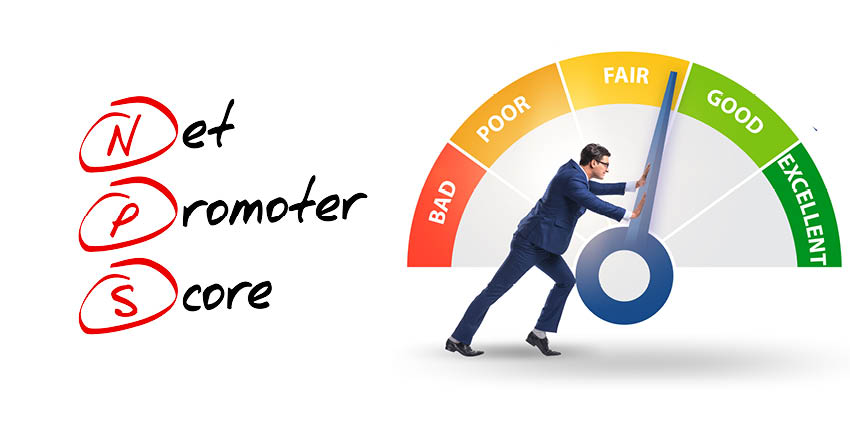A net promoter score (NPS) predicts customer loyalty, gauging the willingness of customers to recommend the brand to a friend or family member.
The metric came to the fore after the release of a 2003 Harvard Business Review article by Fred Reichheld, a partner at Bain & Company. Its objective was to create a quick pulse check of consumer pleasure and loyalty.
Reichheld referred to NPS as “the one number you need to grow,” as it breaks down a customer base into three segments: promoters, detractors, and neutral/passives.
If a company has more promoters than detractors, it is likely to grow. Therefore, NPS is a leading indicator, not a lagging one, measuring future possibilities instead of past performance.
Measuring the Net Promoter Score
To calculate NPS, companies must ask customers: “On a scale of zero to ten, with zero being extremely unlikely and ten being extremely likely, how likely are you to recommend our business to a friend or colleague?”
Depending on the customer’s response, they filter into one of three groups. Those responding with a:
- 0 to 6 are detractors
- 7 or 8 are passives or neutral
- 9 or 10 are promoters.
Each of these three segments encapsulates a specific type of customer behavior:
- Promoters are enthusiastic about the company. Typically, they are repeat customers and zealous advocates who enthusiastically recommend the company to other prospective customers.
- Detractors are dissatisfied with their experience. They are unlikely to buy from the firm again and may spread unfavorable word of mouth that harms future business.
- Neutrals/Passives are somewhat happy but may easily switch to a competitor if given the chance. They are unlikely to spread poor word-of-mouth about the company but lack the passion to promote them.
Once these groups are in place, businesses may calculate NPS by using the following formula:

As an example of how this NPS formula works, consider a scenario where 1000 customers answer the NPS question as follows:
- 250 customers score between one and six
- 250 customers score a seven or eight
- 500 customers score a nine or ten
The final net promoter score is:
25The final NPS is an absolute numerical value, not a percentage. Also, an NPS is sometimes a negative when a business has more detractors than promoters.
Thanks in part to this simple calculation, NPS soon became a popular tool for companies to benchmark their performance against competitors.
However, many businesses will ask the question at a favorable point in the journey or tweak the query to achieve a better score. As a result, these benchmarks have become increasingly unreliable.
Fortunately, there are independent reports with a transparent calculation methodology, which help overcome this issue. A 2020 NICE Satmetrix study is an excellent example of this, finding significant variation across different industries. For instance, department/specialty shops received an average NPS of 52, whereas, for health insurers, this fell to a meager 14.
Types of Net Promoter Scores to Measure
The approach above is the traditional method of measuring NPS. It is often referred to as a “Relational NPS“. However, there are variations, like the two examples below.
Transactional NPS
Transactional NPS surveys follow a consumer interaction. Instead of asking the customer whether they would recommend the business, this method asks them about service specifically.
As such, this form of NPS is easy to split between various contact reasons, enabling the business to improve interactions across the customer journey and provide a score for teams to rally behind.
Employee NPS
Employee NPS (ENPS) measures how likely agents are to recommend a company as a place of work, reflecting their overall loyalty and satisfaction at work.
Organizations can measure ENPS using the same formula as a regular net promoter score survey and target passives/detractors through employee re-engagement activities.
Getting Started with Net Promoter Scores
Companies can draw benefit from NPS by following these steps:
- Identify moments of truth and consider gaining NPS data at these touchpoints. Doing so may help to provide additional insights at the most critical stages of the customer journey.
- Choose the ideal delivery method for the NPS survey – i.e., a contact center agent, SMS message, the IVR, etc. – attempting to make the process as seamless as possible.
- Consider also asking a follow-up question or requesting open text feedback.
- Split NPS survey responses by age, gender, and income. Such data is often beneficial for providing insights into different target markets.
Finally, organizations adopting the NPS system can consider technologies like customer experience management (CXM) software that streamlines data collection, calculation, and analysis.
For another deep dive into a classic CX metric, read our article: What Is CSAT? Definition, Formula, and Benefits







